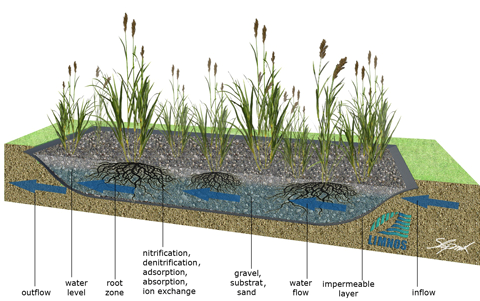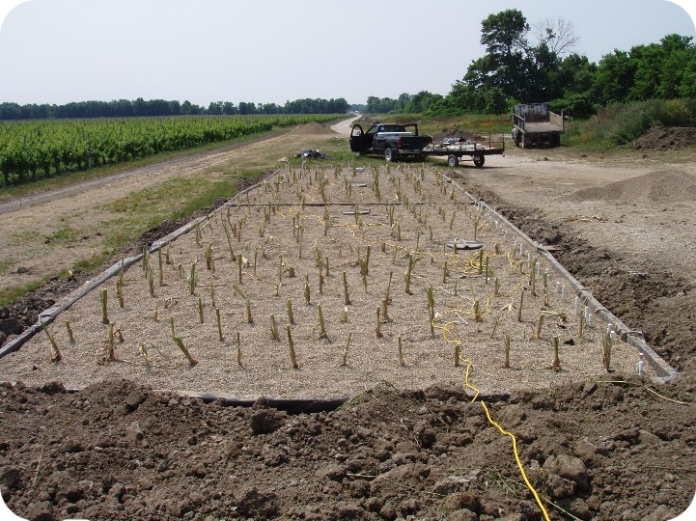Application: Drainage systems, markets, roads and footpaths, stormwater outfall, wastewater treatment plants
Description: A constructed wetland is an artificial wetland consisting of shallow slops or channels where aquatic plants have been planted. It is created to emulate the features of a natural wetland, acting as biofilter or removing sediments and pollutants such as heavy metals from the water. It uses natural processes involving wetland vegetation, soils, and their associated microbial assemblages to improve water quality. As water flows through a wetland, it slows down and many of the suspended solids become trapped by vegetation and settle out. Other pollutants are transformed to less soluble forms taken up by plants or become inactive. Vegetation in a wetland provides a substrate (roots, stems, and leaves) upon which microorganisms can grow and remove pollutants from the water.
They are generally built on seriously degraded wetlands or new areas where there are problems with drainage and water quality. Wetlands are frequently constructed by excavating, backfilling, grading, diking and installing water control structures to establish desired hydraulic flow patterns. Wetland vegetation is then planted or allowed to establish naturally.
Contribution to climate resilience: Constructed wetlands reduce the impacts of floods by retaining large volumes of water and then discharging it slowly. They also provide wastewater treatment services, and can be used by people, livestock and wildlife as a source of water during drought.
Supplementary sources of information:
https://www.epa.gov/wetlands/constructed-wetlands
https://www.epa.gov/sites/production/files/2015-10/documents/constructed-wetlands-handbook.pdf
http://wwno.org/post/wwnos-coastal-glossary
http://www.designweneed.com/tag/agricultural-runoff/
Background image credit: https://flickr.com/photos/certhia/14629367865
This resilience-building measure is sourced from the Water Resource Adaptation Guide (2019) published by the National Council for Sustainable Development at the Ministry of Environment in Cambodia. The full Guide is available to download at URL https://ncsd.moe.gov.kh/sites/default/files/2019-10/Water%20Resources%20Adaptation%20Guide_March%202019_En.pdf


